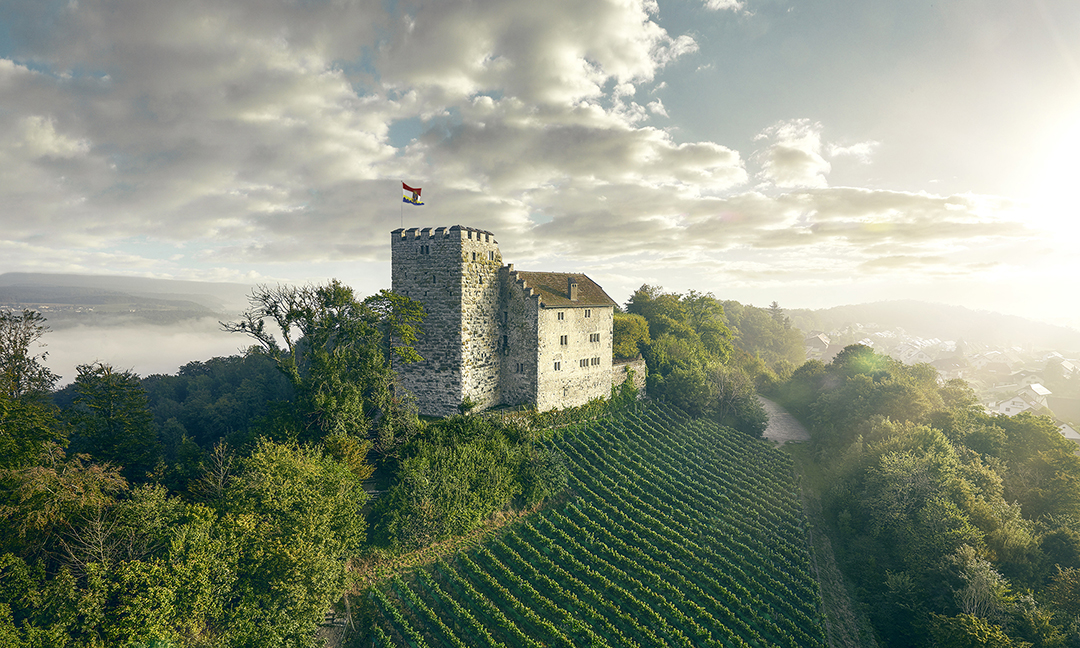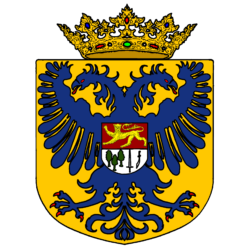Origin & History
Two Houses, Two Families
There is often confusion when it comes to the House, or Houses, of Habsburg. In fact there are two lineages and families; the Royal House of Habsburg and the Imperial House of Habsburg-Lorraine (Habsburg-Lothringen).
Origin
The two houses and families have the same origins. The Royal status of the House of Habsburg started in present day Switzerland with the name Habsburg being adopted from the family’s castle in around 1100 by Otto II. Earlier ancestors either did not use titular family names or used other names. Please see the family tree for further details.
Habsburg Castle
The Habsburg Castle got its name from either the word for hawk (habicht) or from the (Middle High German) word for ford (hab) in combination with one of the forms for castle (burg). Historians can’t confirm which is correct.
Habsburg Castle The Habsburg Castle got its name from either the word for hawk (habicht) or from the (Middle High German) word for ford (hab) in combination with one of the forms for castle (burg). Historians can’t confirm which is correct.
Division
The Habsburg family gained lands and power and moved its base from Switzerland to present day Austria and then on to Spain. Over the years and centuries it worked on its aim in creating an (European) Empire. In this they were very successful and with the exception of France and some other countries/regions their territories covered most of the known world, including other continents. The Royal / Imperial Family and House of Habsburg was in 1556 divided into two by Emperor Charles V. At abdication he assigned certain lands and titles to the Austrian branch led by his brother Ferdinand I, and other lands and titles to the Spanish branch through his son Philip II.
The Austrian line, The Imperial House of Habsburg-Lorraine
The current Imperial House of Habsburg-Lorraine (Habsburg-Lothringen) established itself in 1740/1745. This through its Austrian matriarchal link, Maria Theresa, last of the ruling Austrian Habsburg’s. She married (1736) Francis of Lorraine (himself connected to the Habsburg by his grandmother) and continued her family lineage through her (16) children with the name of Habsburg-Lorraine. The name of this new House was to include “-Lorraine” and conditional to her remaining in power as empress. The purpose was to clearly distinct the new lineage and Imperial Family. The Habsburg-Lorraine family has ever since been in history’s forefront and is well known for leading the Austrian and Roman Empires until the end of World War One. In recent history the general public, and even some of its family members, have erroneously omitted the second part of their family name and incorrectly refer to the family as (von) Habsburg.
The Imperial House of Habsburg-Lorraine may have some claims on lands, estates, titles, and thrones taken from them since the beginning of the 20th century and just after World War One. These claims are for the consideration of His Imperial Highness Karl von Habsburg-Lorraine who heads the Imperial House of Habsburg-Lorraine and its members.
The Spanish line, The Royal House of Habsburg
The current Royal House of Habsburg consists of members of the paternal line through the Spanish Habsburgs. These were thought to have died out in 1700 with the death of Charles II. However, the family and name still exists through the offspring of Juan de Austria (1547-1578), a recognized son of Charles V. Prince Juan de Austria was born a bastard (illegitimate child) and at the age of 11 (in 1558) recognized as a natural son by his father thereby legalising his position.
The term illegitimate is historically a recent term. At the time it was referred to as being a bastard. Being a bastard meant that legally your father was unknown, often in actuality as well. In most developed/European countries the process of recognizing (reconnaître) one’s child still exists in present day law. This was and is a formal and legal way of accepting the child as one’s own. Thus the child would no longer be a bastard (in present day, no longer illegitimate) and enjoy the recognition as a child of the father, carry on the name. In the 16th century this did not mean the child had exactly the same rights as the other children. In many cases a legitimate born child had preferences above those born a bastard. Succession rights, wills, day to day interaction and attitudes differed greatly with modern times. Today a recognized child has the same rights as those born from a married couple. (please note that laws differ from jurisdiction to jurisdiction)
The Spanish name “de Austria” means ‘of Austria’ and is synonymous with the Habsburg family. The reference to Austria refers to where, at the time, the Royal and Imperial family’s power was established. This in terms of lands and powerbase, not its actual roots which lie in Switzerland.
(Names have often been translated into different languages and this may be confusing. Please refer to the names page for further explanations.)
Unlike the Imperial House of Habsburg-Lorraine, branch members of the present day Royal House of Habsburg have not held lands in its own name since the end of the 16th century. The personal titles of the present day Royal House of Habsburg members are in that aspect merely hereditary titles and at the time of writing do not ascertain any control of lands or dominions. The Royal House of Habsburg has no known claims on any lands or thrones.
Members of the Royal House of Habsburg are direct patrilineal ancestors of the son of Juan de Austria and Hillegon van Veen and thus the earliest Habsburgs. This branch of the family has been quietly living in present day The Netherlands, Belgium and Germany since the end of the 16th century (currently also in France, the UK, Thailand, USA and Australia). No other patrilineal branch is known to have survived. However, it is possible that there are other patrilineal descendants of the House of Habsburg in existence today and the (genealogical) search for them continues.

